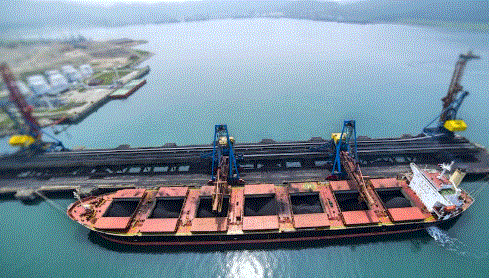Capesize rates came under the $20,000 level and quick fashion after softening demand in both the Pacific and Atlantic markets.
As such, the Capesize 5 time charter average plunged further by $1,578 day-on-day to $18,542 on Thursday.
Following the tumble, the Baltic Dry Index (BDI) dropped by 5.77% day-on-day to 1,388 readings, reflecting the weakness Capesize market.
Lower construction activities in China
Due to heavy rain, the construction activities had slowed down in southern China, where floods made logistics difficult and lessened the demand for iron ores and coals.
This bearish sentiment was later reflected in reduced shipping demand for moving steel-making materials to China.
Though, some market participants expect the steel demand to recover after the rainy season, but the high tonnage list failed to lift freight rates.
Hence, despite the moderate shipping demand in Pacific basin, the freight rates continued its freefall though major miners like Rio Tinto and FMG came out seeking for vessels for the key west Australia to China route.
Bunker prices gain on market optimism
VLSFO prices hiked upward again with gains of $8/mt to $361/mt at the port of Singapore, following market optimism on better oil demand.
As such, Barclays Commodities Research had lowered its oil surplus forecast for 2020 to an average of 2.5 million barrels per day (bpd), from previous estimate of 3.5 million bpd.
The bank went further with prediction of Brent Crude price and WTI price to rise to $53 and $50 for 2021, as global economy recovers gradually from the pandemic.
